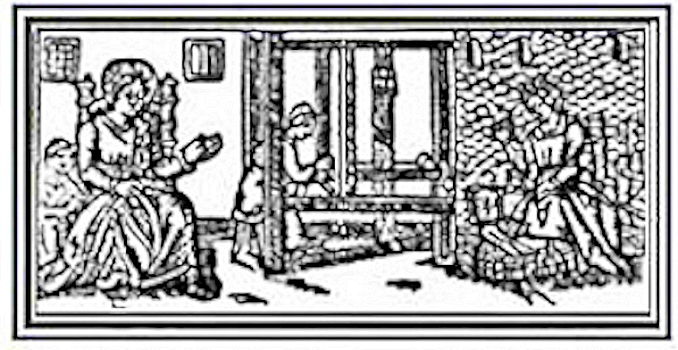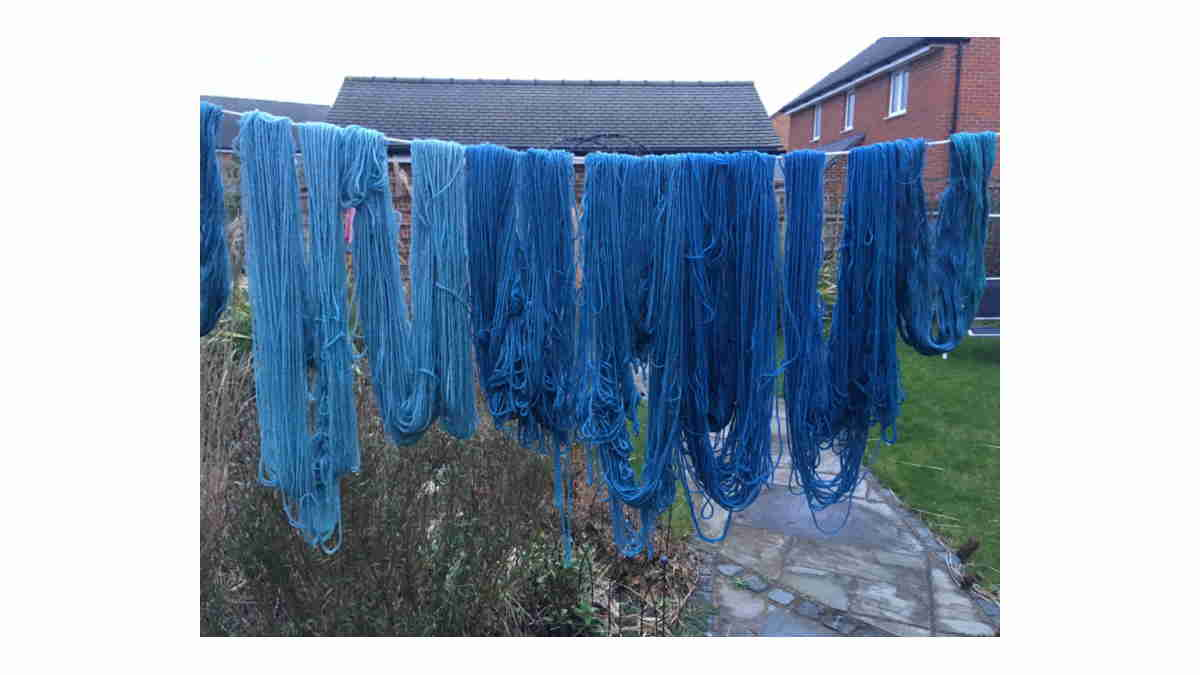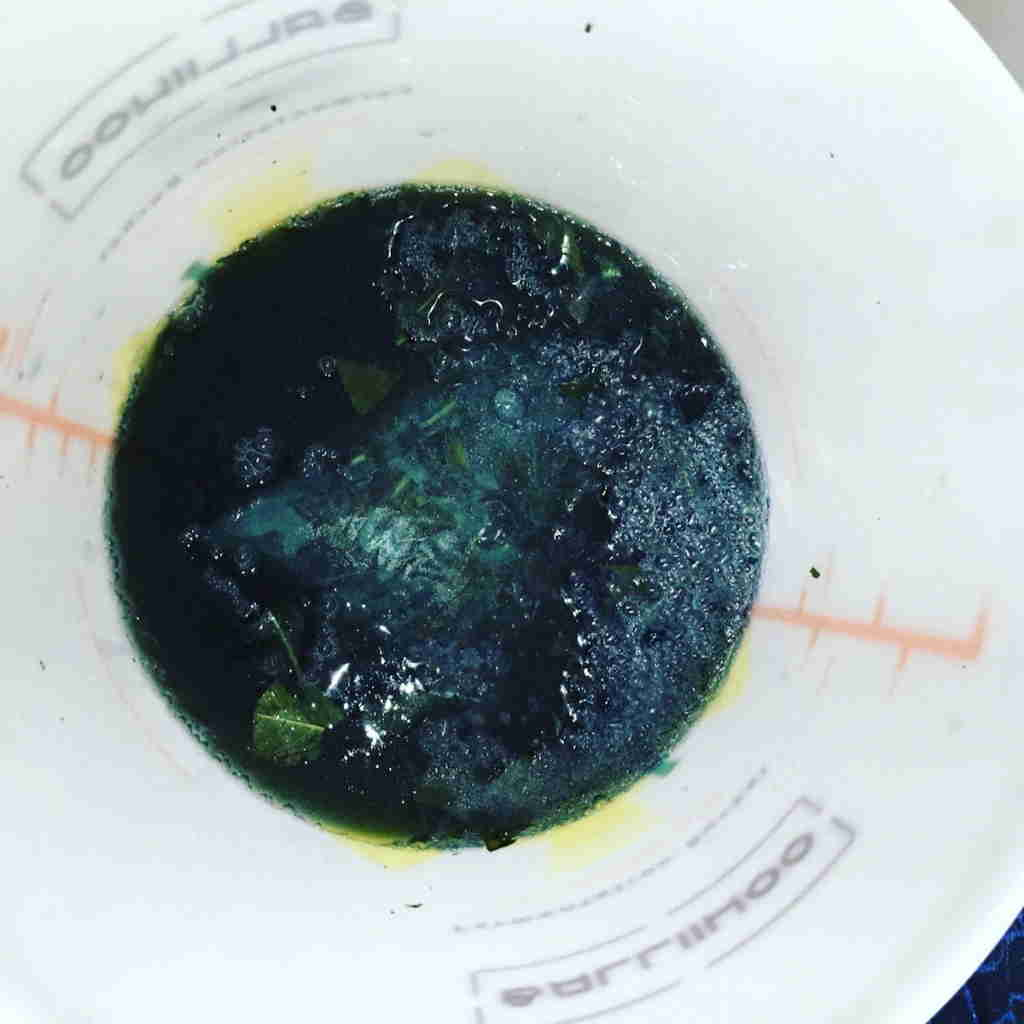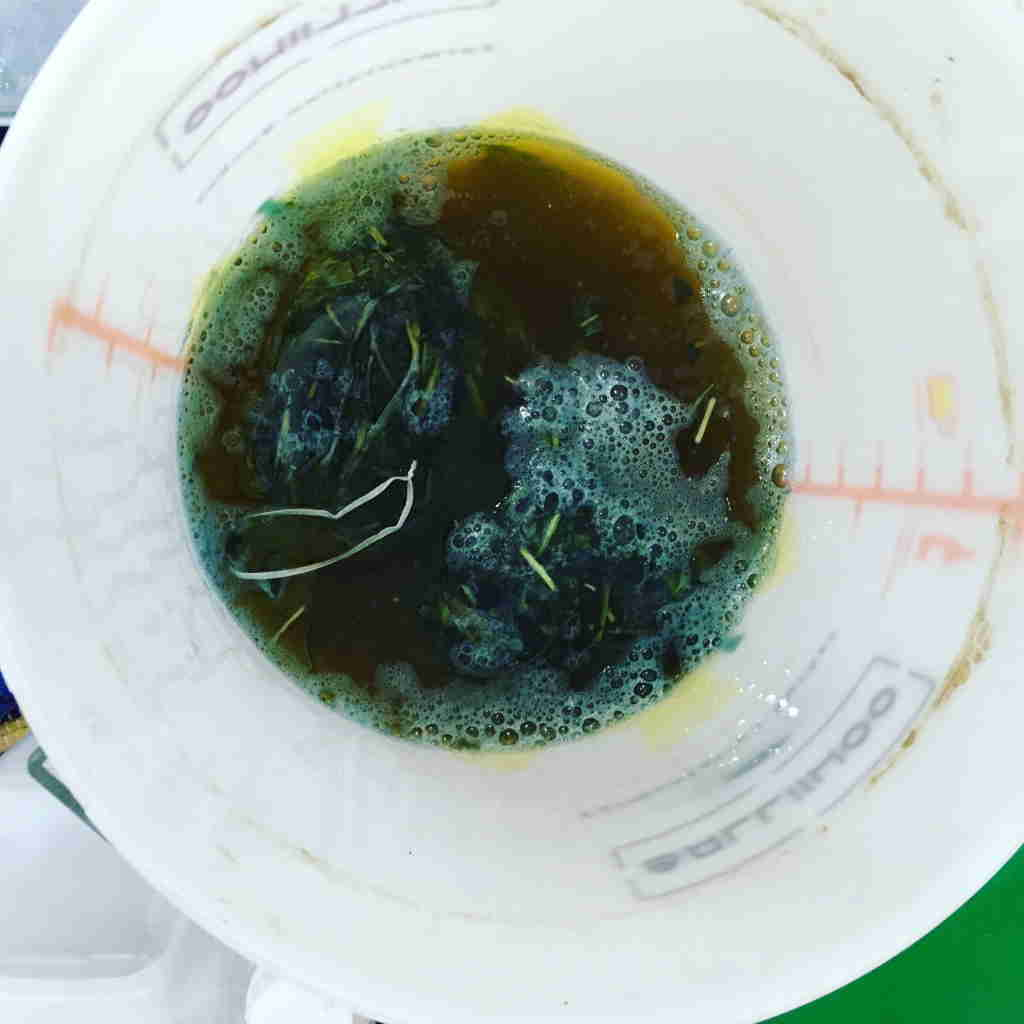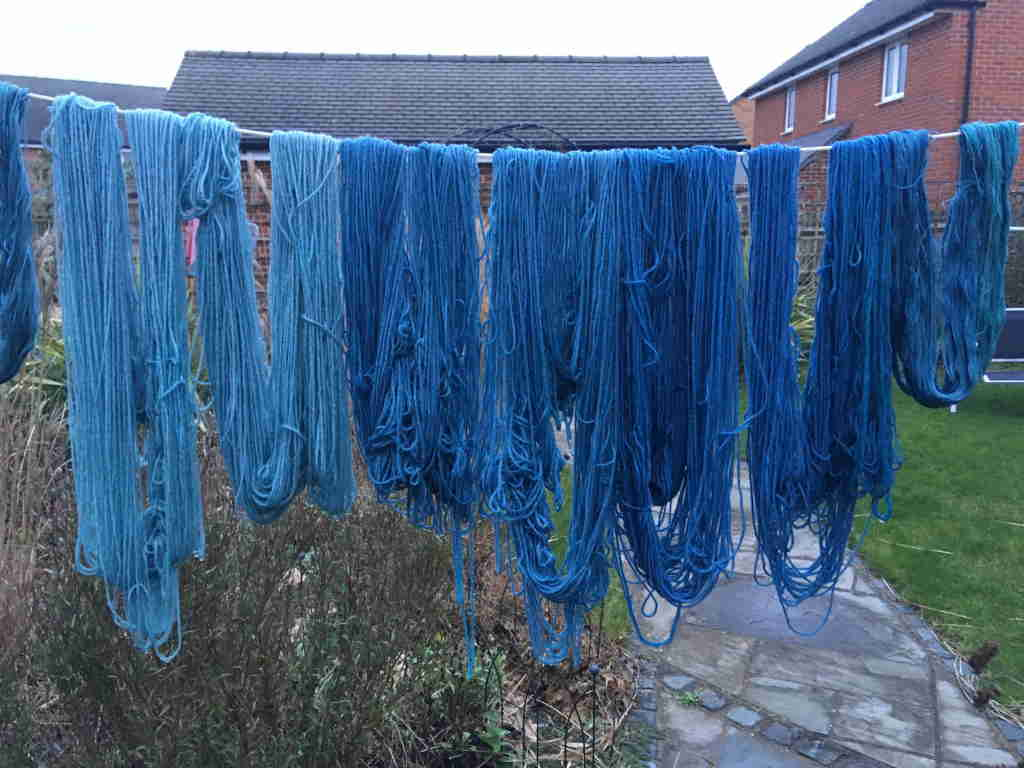The frosts are coming so it was time to cut back all of my Woad and Japanese Indigo plants. I harvested about 800 grams of fresh leaves from about 10 woad plants and about 250 grams of fresh leaves from the Japanese Indigo plants.
There are many different instructions on how to make a Woad or Japanese Indigo vat using fresh leaves. I read through several and thought I would try my own approach. I followed a similar procedure for both the Woad and Japanese Indigo vats.
The directions I’ve read warn that Woad (or Japanese Indigo) is sensitive to hot water >90 Deg C yet the woad needs to be heated up to help release the indigo pigment.
I used hot tap water rather than heating this on the stove, so I could control the amount of heat. Since my tap water wasn’t quite hot enough, I added a kettle full of heated water to the water to raise the temp to about 80 deg. C. I cut the woad leaves into small pieces and let them soak in the hot water for about an hour.
Apparently 115 deg F (or 46 deg C) supposed to be the optimum temperature for the release of Indigo pigment from the plants. When the temperature decreased to <50 deg C I scooped the cut leaves into an organza mesh bag. I thought that this would help prevent the messy leaf sediment in the bottom of the indigo vat.
Then I transferred the Woad dye water into a large plastic bucket. I thought I would try to use a fructose fermentation method, following Michael Garcia’s 1,2,3 guidelines, as I’ve had good success with my previous Fructose Indigo vat.
I have no idea how much indigo pigment is really in the leaves, so I added 20 grams of Calcium Hydroxide to the indigo vat and 40 grams of Fructose. The pH rose to 10.4.

I put the organza mesh bag filled with the Woad leaves back into the bucket and put the lid onto the vat. I did the same with the Japanese Indigo vat.
I checked both of the vats about an hour later and was pleased to see some blue bubbles and the organza bags turning blue.
Now I wait patiently.. perhaps tomorrow I can dye some beautiful indigo grown in my own garden.
Shop for Natural Dyes at Paivatar.com
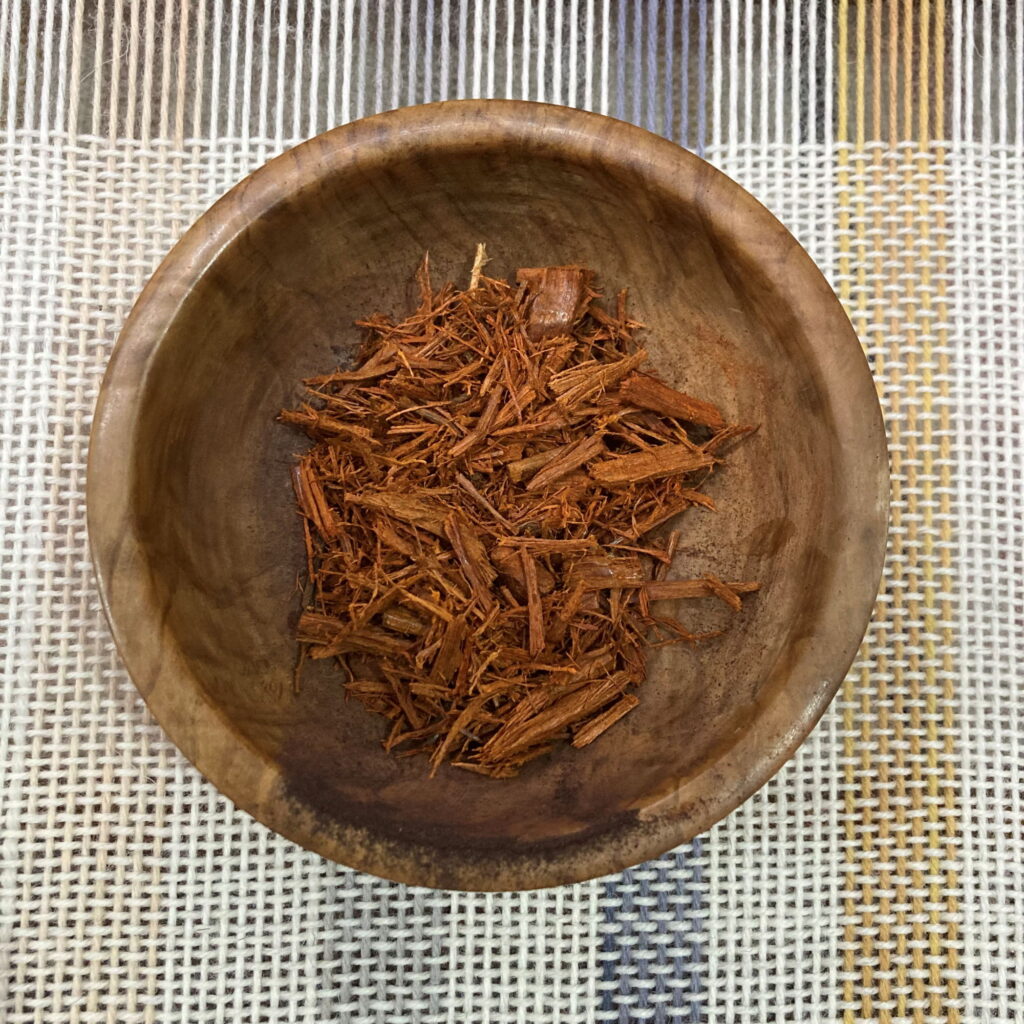
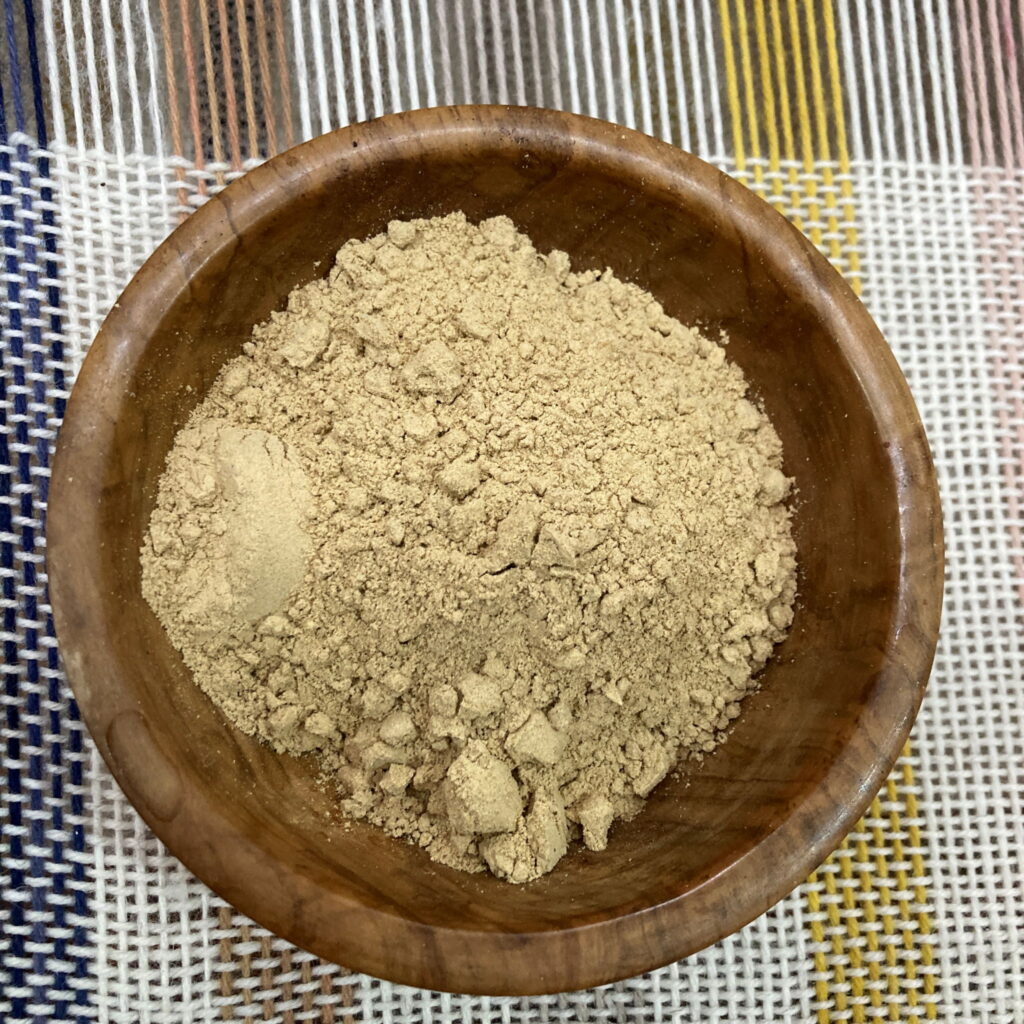
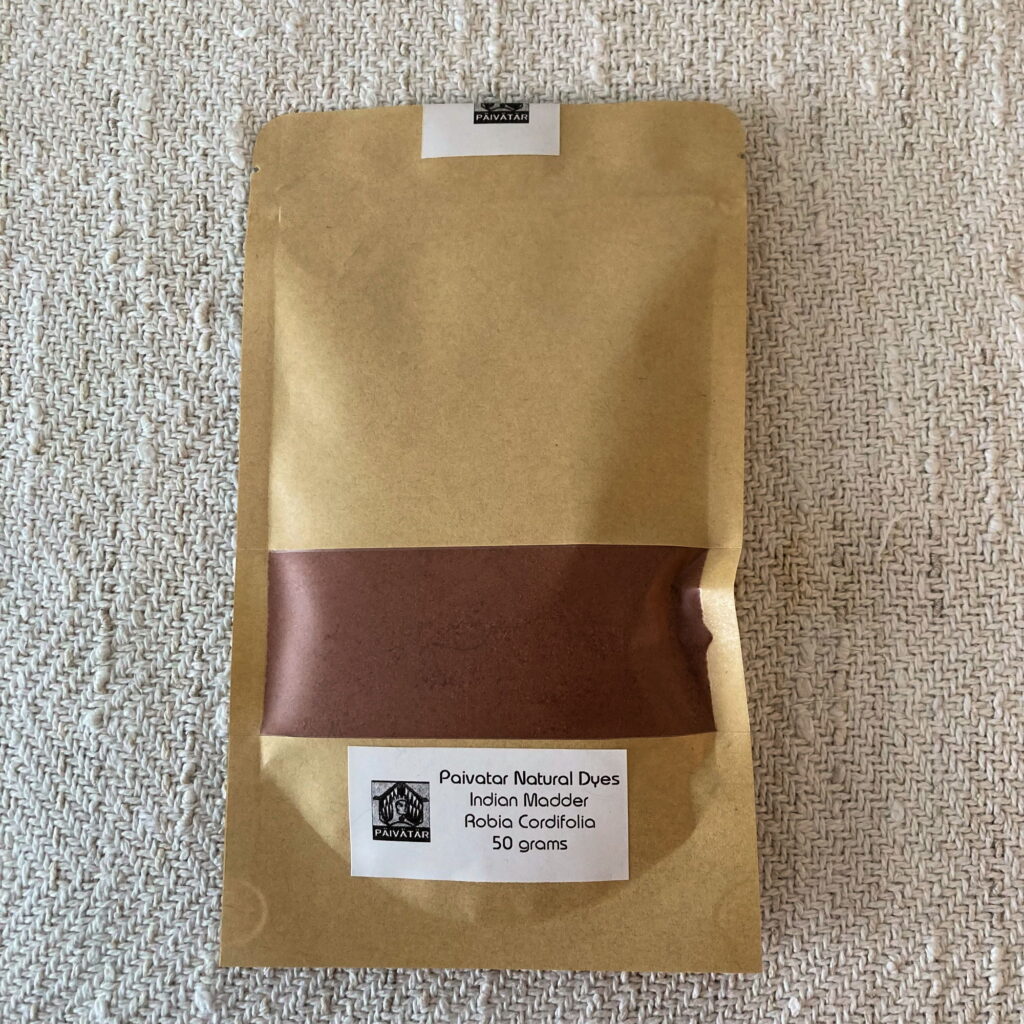
AMAZON – Natural Dye Books
Indigo from Seed to Dye
Indigo: Dye It, Make It: Techniques from plain and dip-dyeing to tie-dyeing and batik, in natural indigo blue
Wild Color, Revised and Updated Edition: The Complete Guide to Making and Using Natural Dyes
Natural Dyes
The Art and Craft of Natural Dyeing: Traditional Recipes for Modern Use
References
An Easy Organic Indigo Vat
Preparing to Dye with Natural Indigo
Creating a Natural Indigo Dye Reduction Vat
Cold Water Fresh Leaf Indigo Vat Dyeing
Indigo Vat Basics
Japanese Indigo
EBAY – NATURAL DYES
NATURAL DYES – US
NATURAL DYES – UK
 LONGTHREAD MEDIA VIDEO
LONGTHREAD MEDIA VIDEO
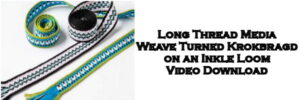 LONGTHREAD MEDIA SUBSCRIPTIONS
HANDWOVEN MAGAZINE
PIECEWORK MAGAZINE
SPINOFF MAGAZINE
LEARN LONGTHREAD MEDIA
PAIVATAR HANDMADE
LONGTHREAD MEDIA SUBSCRIPTIONS
HANDWOVEN MAGAZINE
PIECEWORK MAGAZINE
SPINOFF MAGAZINE
LEARN LONGTHREAD MEDIA
PAIVATAR HANDMADE
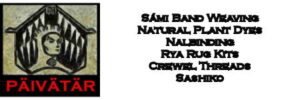 Paivatar on YouTube
Visit my YouTube channel for how-to craft videos.
Paivatar on YouTube
Visit my YouTube channel for how-to craft videos.
Or Please visit my Channel on Rumble for more how-to videos.
https://rumble.com/Paivatar
LIVE STREAMS - Paivatar Studio
KICK
TWITCH MAKERS&CRAFTING
YOUTUBE
Categories: NATURAL DYES
